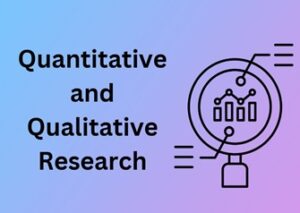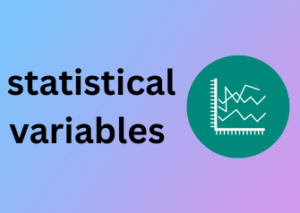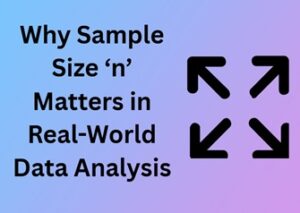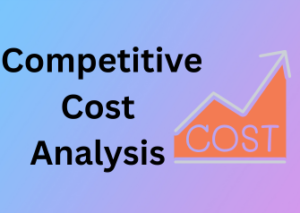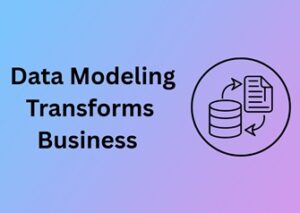Let’s dive into one of the most commonly misunderstood topics in the world of business strategy: Market Research and Marketing Research. While they sound similar—and, trust me, people often use them interchangeably—they’re not the same thing. Each serves a distinct purpose, and understanding their core concepts will help you make smarter decisions, whether you’re a small business owner, a marketer, or just someone curious about how businesses make big moves. So, let’s break it down in plain English!

What is Market Research?
Market research is all about understanding the environment in which your business operates. Think of it as studying the playing field before deciding how to play the game. It focuses on the bigger picture: Who are your competitors? What’s your target market? What’s the size and demand for your product or service?
This type of research dives deep into external factors like market trends, economic conditions, demographics, and geography. Essentially, you’re asking, “What does the market as a whole look like, and where does my business fit in?”
- Who are my competitors, and where are they winning (or losing)?
- What’s the size and growth potential of this market?
- What’s driving demand for my product or service?
What is Marketing Research?
Now, let’s switch gears to Marketing Research. Instead of focusing on the whole market, this gets up-close and personal with your specific marketing efforts. Essentially, you’re figuring out if the message you’re sending is hitting the right notes and reaching the right people. It’s like testing a recipe to make sure you get the perfect flavor.
Marketing research revolves around questions like:
- Is my advertising campaign effective?
- Are customers responding to my branding and messaging?
- Which promotional channels are yielding the best results?
Where market research zooms out to study the big picture, marketing research zooms in on the details of your marketing strategies.
How Are They Different?
Let’s put it into an easy metaphor: If market research is like scouting the entire forest to find the best tree to climb (the environment), marketing research is examining the tree itself to ensure it’s sturdy, climbable, and worth the effort.
The key difference lies in focus:
- Market Research: External factors, trends, opportunities, and the broader market environment.
- Marketing Research: Internal evaluation of campaigns, customer feedback, and brand positioning.
Why Does This Matter?
Understanding the core concepts of market research vs. marketing research ensures you’re using the right tool for the right job. Trying to improve your advertising strategy by solely looking at market trends is like guessing what people at a party will eat without ever asking what they like. Similarly, if you want to evaluate your brand positioning and you only look at broad market data, you’re missing a huge piece of the puzzle.
Pro Tip: Start with market research to understand the landscape, then use marketing research to refine your tactics. They’re not interchangeable, but they’re definitely partners in crime!
So there you have it—two crucial concepts that may sound similar but serve vastly different purposes. With this understanding, you’ll be better equipped to tackle your business objectives and move forward with confidence.
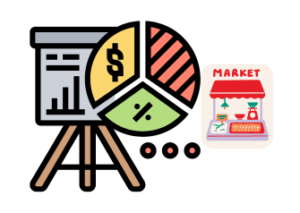
Differentiating Focus Areas: Consumer Behavior vs Strategic Promotion
Hello there! Let’s dive into one of the most fascinating aspects of understanding how businesses work – the distinction between consumer behavior and strategic promotion. Trust me, it’s more than just marketing jargon. Buckle up for a fun and insightful exploration!
What Is Consumer Behavior?
To put it simply, consumer behavior revolves around understanding what makes people tick when they’re buying things. It’s all about the why behind a purchase. For instance, ever wonder why you might splurge on a fancy coffee even though you have perfectly good instant coffee at home? That’s the kind of mystery consumer behavior aims to solve.
Consumer behavior focuses on:
- The psychological, social, and emotional factors driving purchases
- How people make decisions before, during, and after buying
- Patterns and trends in how consumers choose products or services
Essentially, it’s about looking at the individual shopper’s heart and mind – what inspires them, what they fear, and how those elements factor into their buying choices.
Okay, But What About Strategic Promotion?
Now this is where the magic of marketing comes into play! Strategic promotion is less about the ‘why’ and more about the ‘how.’ It’s the game plan for taking a product or service and shouting about it (sometimes subtly) in exactly the right way, to the right people, at the right time. Think of it as the art of convincing people that their lives will be easier, better, or more fabulous with what you’re offering.
Key areas of focus in strategic promotion:
- Creating tailored campaigns to target specific audiences
- Leveraging various platforms like social media, email, and TV
- Positioning products in a way that aligns with consumer needs
Strategic promotion doesn’t dive deeply into personal buying psychology the way consumer behavior does. Instead, it concentrates on crafting a narrative that resonates broadly with the target market.
Why Do These Differences Matter?
So, what’s the big deal about differentiating these two focus areas? Well, here’s the catch: honing in on consumer behavior without a good promotion strategy (or vice versa) is like trying to bake a cake without either ingredients or a recipe. It just doesn’t turn out as well as you hope.
Consumer behavior data is essential for crafting strategies that feel personal and relatable. For example, if research reveals that your customers care deeply about sustainable products, you’ll know to emphasize eco-friendly aspects in your promotions. But without strategic promotion, even the most insightful data doesn’t get leveraged properly. In contrast, even a genius ad campaign will flop without an understanding of what your audience truly wants or values.
What Drives the Process: Data Collection in Market and Marketing Research
When it comes to understanding your audience, data collection is like the compass guiding your ship through uncharted waters. Both market research and marketing research rely heavily on robust data collection methods, but they approach it quite differently. Let’s dive into what drives these processes, why it matters, and how you can maximize your efforts to bring home the gold: actionable insights!
Why Data Collection is Critical
Data is the foundation of informed decision-making. Without it, businesses would essentially rely on guesswork—like looking for a needle in a haystack while blindfolded! Strong data collection helps organizations minimize risks, build strategies, and satisfy customer needs effectively. Let’s explore how the driving forces vary in market research (focusing on the “market” environment) versus marketing research (gearing toward strategic efforts).
Market Research: Understanding External Dynamics
The heart of market research beats for the bigger picture. It centers around external factors such as:
- Consumer demographics – Collecting information about age, income brackets, locations, and preferences.
- Competitor analysis – Observing rival businesses and determining their strengths and weaknesses.
- Industry trends – Analyzing shifts within the economy, market sizes, and emerging technologies.
For data collection, market researchers lean toward techniques like:
- Surveys: Distributed to large groups to capture broad market perceptions.
- Focus groups: Bringing people together to analyze opinions on products or services.
- Big data analysis: Harnessing vast online datasets to uncover consumer habits.
The goal is to understand the “where,” “what,” and “who” of your market. Armed with this data, businesses can target the right audience or decide whether to enter a new market entirely.
Marketing Research: Tracking What Works
Marketing research, on the other hand, zooms in to evaluate specific promotional efforts and consumer interactions. Think of it as refining the gears of your marketing machine. This involves:
- Campaign performance analysis – Understanding which advertisements are grabbing attention and which are falling flat.
- Consumer behavior tracking – Examining how customers engage with a particular product or brand message.
- Customer satisfaction surveys – Collecting direct feedback to gauge how well marketing aligns with consumer expectations.
In terms of methods, marketing researchers often employ:
- A/B testing: Comparing two marketing approaches to see which yields better results.
- Social media analytics: Observing user engagement metrics like clicks, shares, and comments.
- Email tracking: Monitoring open rates and link clicks for targeted campaigns.
The aim here is to answer the “how” and “why” regarding marketing effectiveness. It’s all about tailoring strategies for maximum impact.
Keeping Common Pitfalls in Check
While data collection is undeniably powerful, it comes with its fair share of potential obstacles. Over-collection of data without a clear goal can result in “analysis paralysis,” where decision-making becomes overcomplicated. Additionally, relying on outdated or biased data can lead to misinformed conclusions, so stay vigilant about keeping your sources current and reliable.
One Key Rule: Let Data Steer the Ship, Not Drive Blindly
Both market and marketing research processes rely on actionable data, but they serve different purposes. Market research is your macro lens, giving you clarity on external landscapes, while marketing research zooms in to fine-tune your internal strategy. The key takeaway? Invest time in collecting relevant data that’s well-aligned with your objectives—and don’t forget to act on it!
Whether you’re exploring a new market or optimizing an ad campaign, keeping your data game strong is the secret ingredient to lasting success.
Tools and Techniques: Methods Exclusive to Each Research Type
Let’s dive headfirst into the fascinating world of tools and techniques in market research and marketing research! These two types of research, while interconnected, require distinct methods to gather insights and drive better decisions. No need to feel overwhelmed though—we’ll break it all down into fun, understandable chunks, so you can see how each approach shines in its own way. Ready? Let’s roll!
Market Research: Exploring the Bigger Picture
Market research is all about the “who,” “what,” and “where.” It’s the starting point for uncovering the landscapes of an industry, understanding competitors, and identifying customer demographics. That said, the tools and techniques for market research focus heavily on obtaining large-scale insights. Here are some of the key methods:
- Surveys and Questionnaires: Often targeted at large audience groups, these tools are golden for collecting data on customer preferences, purchasing habits, or even pricing expectations. Online platforms like Google Forms, SurveyMonkey, and Typeform help make this process quick and efficient.
- Industry Reports and Analytics: A treasure trove of pre-collected data, industry reports from firms like Nielsen, Statista, or IBISWorld help you decode market size, growth trends, and emerging market opportunities.
- Competitor Analysis Tools: Platforms like SimilarWeb or SEMrush provide a deep dive into competitor performance. They highlight aspects like website traffic, product positioning, and value propositions in your market niche.
- Focus Groups: While they can also be used in marketing research, focus groups in market research typically aim to analyze broader opinions about the market conditions or industry as a whole.
In a nutshell, market research aims to map the terrain so you can figure out where opportunities lie and whether stepping into a specific market is worth the investment. Without it, you’d be navigating uncharted waters blindfolded—scary, right?
Marketing Research: Digging into Campaign Success
Now, when we move to marketing research, things get a little more focused and action-oriented. This is the realm where we evaluate the effectiveness of marketing efforts, campaign strategies, and customer engagement. The tools and techniques here are designed to measure and refine. Let’s look at some examples:
- A/B Testing: A marketer’s best friend! A/B testing is used to test variations of advertisements, landing pages, or email copy. Platforms like Optimizely and Google Optimize make it easier to see what works and what flops.
- Ad Tracking Tools: Ever wondered how effective your ads are? Tools like Google Ads, Facebook Ads Manager, or HubSpot help measure metrics like click-through rates, impressions, and conversions to evaluate ad performance.
- Sentiment Analysis: This technique dives into how people feel about your brand. Tools like Brandwatch or Hootsuite Insights analyze social media feedback, reviews, and online chatter to gauge vibes and sentiments.
- Customer Feedback Systems: Tools like Zendesk or NPS (Net Promoter Score) surveys collect customer sentiments about your marketing efforts, offering insights on satisfaction and areas for improvement.
Marketing research focuses on the “how”—how well a particular strategy resonates with your audience and how it drives conversions or engagement. It’s more like perfecting the performance on a stage where every second matters.
Key Takeaway: A Balancing Act
Here’s the big reveal—while market research extracts the data needed to inform your business decisions from a broader perspective, marketing research zeroes in on refining your outreach strategies. Both require a mix of qualitative and quantitative methods, but their focus is uniquely tailored.
So, when deciding which approach to take, ask yourself—are you trying to understand the market, or are you looking to polish your campaign efforts? When both come together, magic happens! One sets the stage, while the other ensures the act brings the house down.
Practical Applications: When to Use Market Research or Marketing Research
Let’s talk about a common marketing conundrum: when do you need to dive into market research versus its close cousin, marketing research? They sound similar, right? But despite the overlap in their names, their applications are quite distinct. Don’t worry—we’re here to help clear up the confusion and give you a better idea of when to use each approach. By the end of this, you’ll feel confident choosing the right research type to meet your goals!
The Right Time for Market Research
Picture this: you have a great idea for a new product or service. Before jumping in, wouldn’t you want to know whether the market is ready for it? That’s where market research shines. It’s all about understanding the bigger picture—your industry, the competition, customer demand, and even economic trends. Here are some common scenarios that call for market research:
- Entering a New Market: Expanding your business into a new country, city, or demographic? Use market research to figure out if there’s a demand, how the competition looks, and what factors might affect your entry.
- Launching a New Product Line: Whether you’re introducing electric bikes or a new line of organic snacks, market research helps you gauge potential customer interest and identify pain points your product can solve.
- Industry Analysis: Is the industry growing, stagnating, or shrinking? Market research provides the macro lens you need to make informed business decisions via data on market size, trends, and key players.
Think of market research as your compass—it helps you figure out if you’re heading in the right direction before committing precious resources.
When to Turn to Marketing Research
Now let’s switch gears and talk about marketing research. This one narrows the focus, zooming in on your specific brand, campaign, or customer touchpoints. If market research is about “where to play,” marketing research is about “how to win.”
Here’s when marketing research is the superhero you need:
- Crafting a Marketing Campaign: Planning a big campaign and wondering what visuals, language, or channels will resonate most with your audience? Marketing research gets to the heart of these questions.
- Enhancing Customer Experience: Ever wonder why customers abandon their carts or prefer one competitor over another? Marketing research digs deep into customer behavior and the journey they take with your brand.
- Evaluating Brand Perception: If you want to understand how people view your company and improve your brand image, marketing research will deliver the insights you need.
Marketing research is how you refine your strategy and execution. It ensures your ideas aren’t just good—they’re exactly what your customers want.
Choosing the Right One
So, how do you decide? The key is understanding your objective:
- Need to explore the market landscape? Go with market research.
- Want to fine-tune your marketing efforts? Marketing research is your best friend.
While both types of research have unique roles, they often work hand-in-hand. For instance, you might first do market research to assess demand for a new tech gadget, followed by marketing research to create messaging that resonates with your target audience. It’s all about using the right tool at the right time.
So, the next time you’re faced with a strategic question, just ask yourself: am I looking at the big picture, or digging into the details? With that clarity, you’ll always know which type of research to lean on.
Bridging the Gap: How the Two Research Types Complement Each Other
When it comes to understanding your business landscape, both market research and marketing research have their unique strengths. But here’s the secret sauce: they work even better when they’re combined. Much like peanut butter and jelly or coffee and a productive morning, these two research types complement each other perfectly. Let’s dive into how they connect and why bridging this gap can make a world of difference for your organization.
Understanding the Connection
To start, think of market research as the foundation — the “big picture.” It focuses on your industry, your competitors, and the ecosystem you’re operating in. On the other hand, marketing research zooms in closer, focusing on specific marketing strategies, such as testing the success of an ad campaign or exploring the effectiveness of a promotional offer. Individually, these research methods tackle different challenges. Together, they give you both altitude and focus: market research provides the macro-level understanding, while marketing research delivers the micro-level insights. They’re two sides of the same coin.
Why Use Both?
Imagine you’re launching a product. Market research might help you identify a growing demand in a specific region or uncover a niche audience. Great! But then comes the question: how do you communicate effectively with that audience? That’s where marketing research comes in. It can guide you in selecting the right messaging, visuals, platforms, and more based on consumer preferences. Using one without the other is like baking a cake without the frosting — it works, but it’s far from perfect.
- Market Research: Helps you figure out the “where” and “who.” For example, where should the product be launched, and who’s most likely to buy it?
- Marketing Research: Takes it a step further to answer the “how” — how should you present your brand, and how will the campaign resonate emotionally?
Best Practices for Bridging the Gap
So, how can you effectively connect these two types of research to build a cohesive strategy? Here are some tips:
- Start with Market Research: Lay the groundwork by answering big-picture questions first. Define your market landscape, understand competitive forces, and identify consumer segments.
- Incorporate Marketing Research: Once the big questions are answered, use marketing research to refine your execution. Test your messaging, experiment with ad channels, or gather feedback on visual design.
- Create a Feedback Loop: Use real-world metrics from your marketing efforts to inform ongoing market research. This ensures that your strategy remains dynamic and responsive.
The Benefits of Harmony
When you bridge the gap between these two research types, the benefits are endless:
- Better alignment between your high-level market goals and actionable marketing plans.
- A deeper understanding of customer behavior and how to respond to it efficiently.
- A higher return on investment, as campaigns and strategies are based on well-rounded, data-driven insights.
Industry Examples: Real-World Scenarios Illustrating the Differences
Ready to dive into how market research and marketing research apply in the real world? These buzzwords can sound theoretical, but they’re essential tools driving major business successes across industries. Let’s walk through some real-world examples that clearly show how these two kinds of research differ in action.
The Automotive Industry: Understanding Consumers vs Effective Campaigns
Take a car manufacturer entering a new market. First, they need market research to answer the big-picture questions: What’s the size of the market? What’s the average income of car buyers? What features do people prioritize when buying a vehicle (fuel efficiency, safety, or luxury)? This data forms the foundation for their business decisions.
Once the company understands the landscape, they shift gears to marketing research. Here, the focus is on creating a buzz around their products and crafting impactful campaigns. Are TV ads more effective, or should they invest in online platforms? Which tagline or design resonates better—“Built for the Journey” or “The Future of Driving”? These questions help fine-tune promotional strategies targeted at that market.
Retail Giants: Walmart vs Local Boutiques
Big retailers like Walmart regularly rely on market research to stay on top. For example, they examine economic reports and local demographics to decide where to open a new store. Data like population density, average household income, and even competitors’ performance all play a massive role. It’s about understanding their environment on a macro level.
On the flip side, marketing research steps in when a retailer needs to solidify its advertising efforts. Let’s say Walmart is launching a back-to-school campaign. They might test different ad designs and promotions across focus groups or track online engagement metrics. Is a 20% discount ad more appealing, or does free shipping steal the show? This stage is all about refining campaigns to maximize their reach.
Fast Food Chains: Tapping into Tastes and Preferences
Fast food companies like McDonald’s often use market research to understand local tastes. Wonder why you won’t find McPaneer Tikka burgers outside India or McLobster rolls in most places other than Canada? It’s all thanks to precise market research that identifies cultural tastes and regional preferences. They tailor their menus accordingly.
Next comes marketing research—what makes customers crave those burgers and fries? Here, testing ad visuals, slogans, and celebrity endorsements come into play. An example? McDonald’s might analyze how an ad featuring their golden arches performs in creating instant hunger compared to a direct promotion of a limited-time meal deal.
Tech Titans: Market Expansion and Creative Innovation
For companies like Apple, market research is integral before launching new products or entering new countries. They ask the big questions: What’s the market potential for $1,000+ phones in developing countries? How do potential users view privacy features, and are they willing to pay extra for them?
On the marketing research side, Apple excels in perfecting its campaigns. Think of their minimalist product ads or the iconic “Shot on iPhone” tagline. Before rolling out such campaigns, they conduct surveys and focus groups to uncover which emotional triggers captivate their target audience the most.
Key Takeaways for Your Business
- Use market research: When you’re navigating unfamiliar territory and need a bird’s-eye view of trends, demographics, or competitors.
- Focus on marketing research: When you’re ready to connect directly with your audience through effective campaigns.
In the fast-changing business world, knowing the differences—and applying the right approach—can make all the difference. Whether you’re a multinational corporation or a budding entrepreneur, leveraging these research strategies effectively is your pathway to staying ahead of the game. So the next time you’re tackling a business challenge, think like an expert: Is it a market research kind of day? Or a marketing research one?





